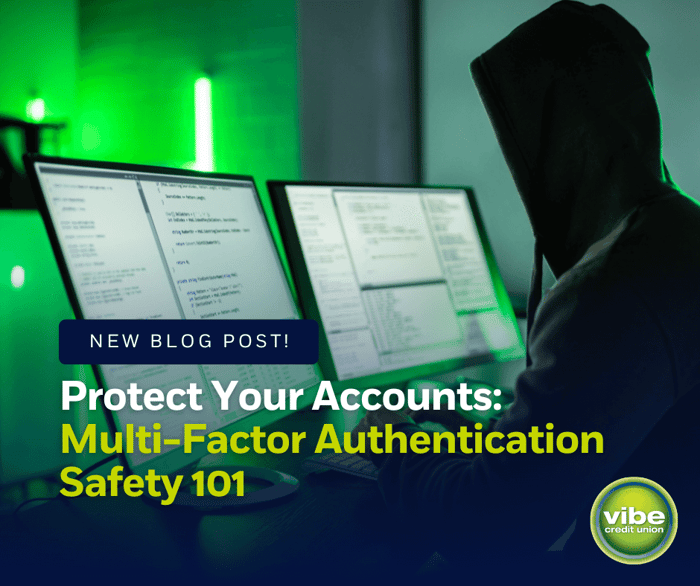Multi-factor authentication (MFA) is a security process that requires you to provide two or more verification methods to access an account. Although this feature is a great way to keep your data safe, educating yourself on multi-factor authentication safety is important.
How MFA Provides Financial Security
MFAs go beyond a password and provide extra security for your finances and data. Even if someone knows your password, MFA requires a secondary verification step, making it much harder for cybercriminals to access your accounts.
Examples of multi-factor authentication include email or text codes, authentication apps, and biometric verification such as facial recognition.
MFA Scams to Look Out For
- Fake support text messages are common for cybercriminals to access your financial accounts. Cybercriminals will trigger multiple MFA alerts on your phone. They will then contact you, pretending to be your financial institution, and ask you to approve the request. This scam is usually done under the guise of attempted fraud protection with urgent messaging to use your emotions against you.
Phone call verification is another common MFA scam to watch out for. If cybercriminals can get your login information, they can trigger an MFA call prompt, hoping you will answer and verify your identity.
Phishing links with urgent messaging are another MFA scam method. Cybercriminals will push you to follow a link and log into your account, which allows them to access your login information and makes you comfortable approving an MFA request.
Multi-Factor Authentication Safety Tips
You can do simple things to keep your accounts secure when using Multi-Factor Authentication. Our biggest suggestion is to think before you click and not let a false sense of urgency drive you to act impulsively.
- Never approve a security prompt that you did not request. If it's a shared account, verify the attempt with your joint account owner.
- If you receive an unpromoted MFA request, immediately change your password for that account and any other accounts that share this password.
- Make your passwords strong by using a variety of characters, cases, punctuation, and numbers. Try to use a different password for multiple accounts. Store your passwords securely in your home or a digital password manager.
When in doubt, go to your financial institution's official website or contact you via phone. Use a contact method outside of the suspicious communication you received to get in touch. Be cautious when it comes to your multi-factor authentication safety, especially when it comes to your finances.
Your Security at Vibe Credit Union
Vibe Credit Union will NEVER contact you requesting a multi-factor authentication code. If, for any reason, you suspect financial phishing or fraud on your Vibe Credit Union account, don't hesitate to contact us at 248-735-9500.







